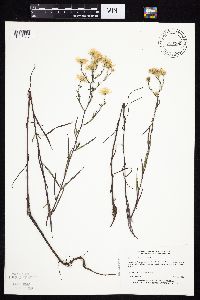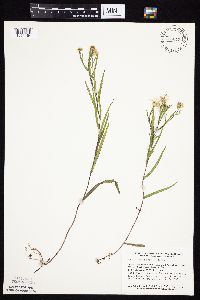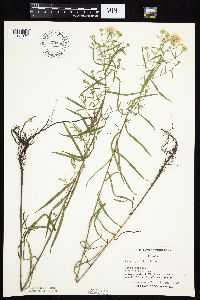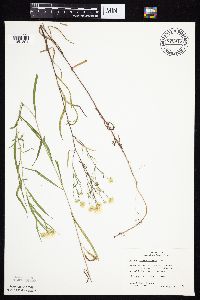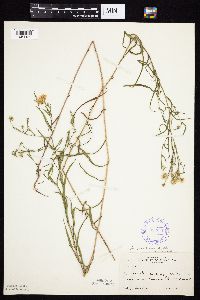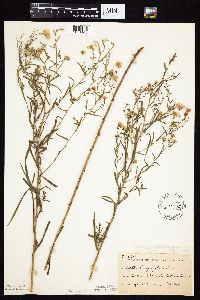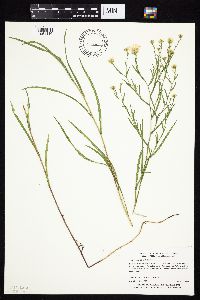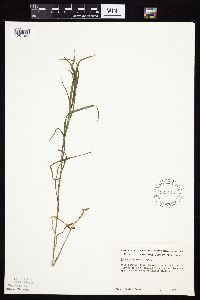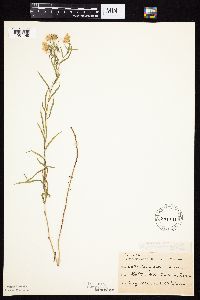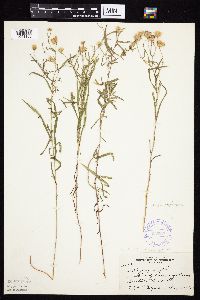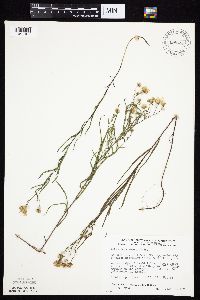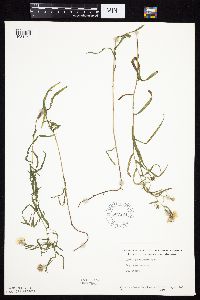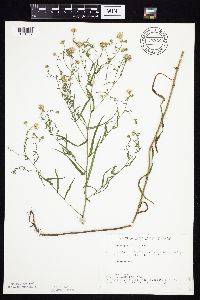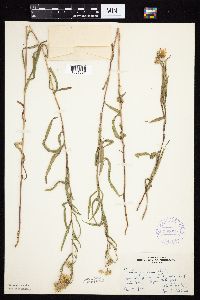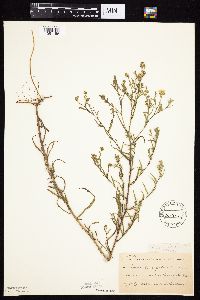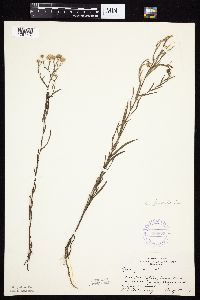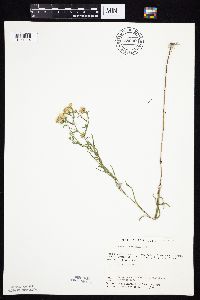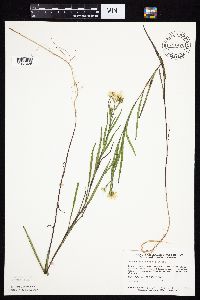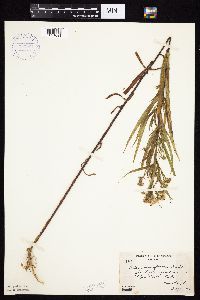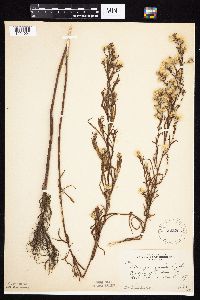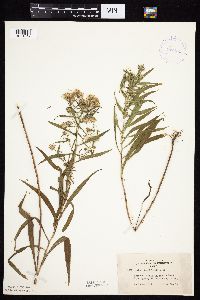Symphyotrichum boreale
|
|
|
|
Family: Asteraceae
Boreal American-Aster, more...northern bog aster
[Aster borealis (Torr. & A. Gray) Prov., moreAster junciformis Rydb.] |
Perennials (5.5-)13-85 cm, colonial; slender (0.6-2.8 mm diam.), long-rhizomatous (rhizomes of season shallow- or deep-seated, not producing rosettes near parent stems). Stems 1-3+, erect (straight, slender, often reddish to slightly glaucous proximally), glabrous. Leaves stiff, margins entire to sparsely subserrulate, revolute, scabrellous, apices mucronulate, sometimes with callous point, faces glabrous, abaxial midveins sometimes sparsely strigillose; basal withering by flowering, subpetiolate to petiolate, petioles winged, base dilated, sheathing, eciliate, blades linear-oblanceolate to ovate or suborbiculate, 20-150 × 5-60 mm, bases attenuate, margins shallowly serrate or entire, apices obtuse to rounded; proximal cauline withering by flowering, sessile or subpetiolate, petioles widely winged, bases strongly clasping, blades linear-lanceolate to linear, 15-90 × 2-12 mm, bases attenuate to cuneate or subauriculate, ± clasping, apices obtuse to acute; distal sessile, blades linear-lanceolate (sometimes lanceolate) to linear, (40-)60-150 × 2-6(-8) mm, ± reduced distally, bases subauriculate, subclasping, margins entire or sometimes remotely serrulate, apices acute. Heads borne singly or in open, often lax, racemiform or paniculiform arrays, branches ascending, sparsely leafy. Peduncles 0.5-5 cm, glabrous, bracts 1-3, remote, linear-lanceolate to linear, reduced distally, not grading into phyllaries (sometimes subtending heads). Involucres cylindro-campanulate, (4-)5-8 mm. Phyllaries in 4-5 series, usually appressed, rarely outer recurved, lanceolate or oblong-lanceolate (outer) to linear (innermost) ± unequal to sometimes subequal, bases indurate 1 / 3 - 1 / 2 (sometimes not indurate), margins scarious, erose, hyaline or tinged with reddish purple, sparsely ciliolate, green zones lanceolate to linear-lanceolate, apices acute to acuminate, mucronate to apiculate, often purple or reddish purple (particularly inner), faces glabrous. Ray florets (15-)25-35(-41); corollas white to often pale rose, pale purple or lavender, laminae (7-)10-15(-20) × 1.1-1.5 mm. Disc florets (15-)25-30(-40); corollas cream or pale yellow becoming pink or brown purple, 3.7-6.6 mm, tubes shorter than funnelform throats, lobes triangular, 0.5-1 mm. Cypselae yellowish tan or purple to brownish with purple streaks or grayish tan (nerves stramineous), obovoid, ± compressed, 0.6-2 mm, 3-5-nerve Flowering Aug-Oct. Mostly calcareous areas, fens, marshes, bogs, open cedar-tamarack-spruce swamps, stream and pond margins, wet meadows, swales; 0-1500+ m; Alta., B.C., Man., N.B., Nfld. and Labr. (Nfld.), N.W.T., N.S., Nunavut, Ont., P.E.I., Que., Sask., Yukon; Alaska, Colo., Idaho, Ill., Ind., Iowa, Mass., Mich., Minn., Mont., Nebr., N.H., N.J., N.Y., N.Dak., Ohio, Pa., S.Dak., Vt., Wash., W.Va., Wis., Wyo. Some of the western populations originally determined as Symphyotrichum boreale in western Wyoming and adjacent Montana are referable to S. welshii. Those of eastern Wyoming, Colorado, and the Black Hills are S. boreale. There is a gap between the ranges of the two species in Wyoming where neither occurs. Symphyotrichum ×longulum (E. Sheldon) G. L. Nesom (syn. Aster longulus E. Sheldon), reported from Minnesota, is the hybrid between S. boreale and S. puniceum var. puniceum.
Plants slender, from long rhizomes seldom over 2 mm thick; stem 1.5-10 dm, glabrous below, puberulent above in decurrent lines, seldom over 2.5 mm thick; lvs chiefly cauline, linear to lance-linear or oblong-linear, 4-13 cm נ2-5(-9) mm, sessile and usually slightly auriculate-clasping, entire or subentire, generally scabrous on the margins and sometimes puberulent along the midrib beneath, ascending, mostly thin and lax; heads few to sometimes rather many in an open, usually short and broad infl, or occasionally solitary in small plants; invol 5-7 mm, glabrous, its slender, mostly acute bracts ±strongly imbricate, often with purple tip or margins; rays 20-50, white to pale blue or lavender, 7-15 mm; lobes of the disk-cors comprising 15-30% of the limb; 2n=16, 32, 48, 64. Cold bogs; n. N.J. to Que., w. to Minn., Colo., and Alas. (A. junceus, misapplied; A. junciformis) Gleason, Henry A. & Cronquist, Arthur J. 1991. Manual of vascular plants of northeastern United States and adjacent Canada. lxxv + 910 pp. ©The New York Botanical Garden. All rights reserved. Used by permission. From Flora of Indiana (1940) by Charles C. Deam Infrequent to frequent in marshes in northern Indiana. With one exception, all of my specimens have white flowers. This species is variable in the size of the heads and branching of the stem. …… Indiana Coefficient of Conservatism: C = 10 Wetland Indicator Status: OBL |







